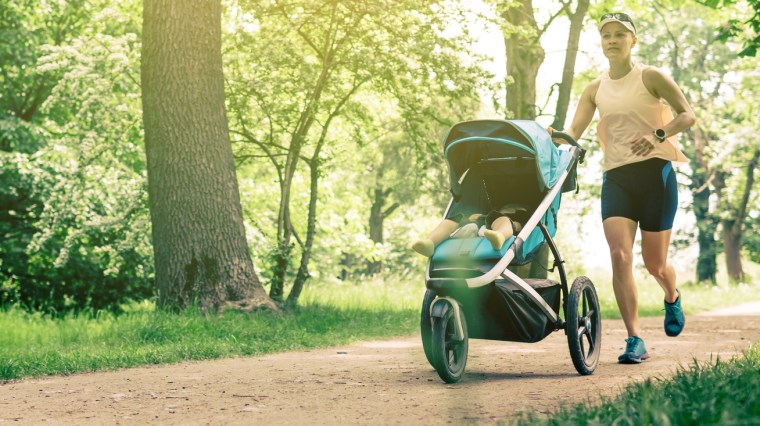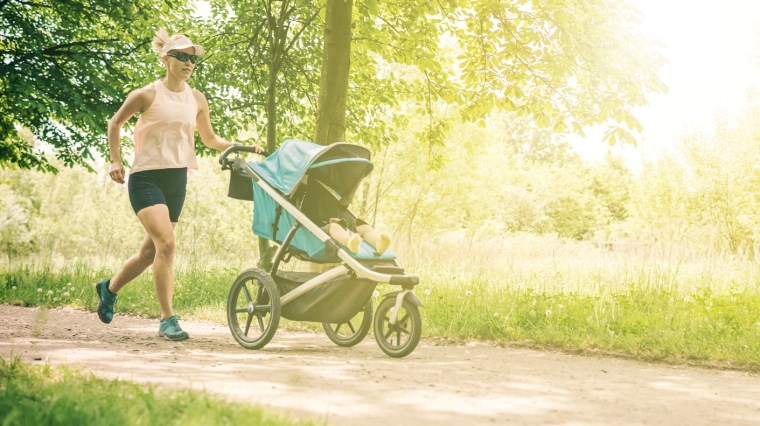6 Essential Running Pram Tips To Improve Your Posture

Whether you call it a running pram, jogging stroller or running buggy - running prams are empowering, allowing you to get back into your fitness routine post-partum while bonding with the newest member of your family.
For mums and dads new to running stroller workouts, having a heads-up on the best running form techniques when pram running can ease you into it without complications. Like any new fitness routine, it should be a gradual transition that allows your body to adapt while allowing both you and your baby to benefit from the feel-good vibes of the outdoors.
Practice with your running pram
Practice walking and jogging with your running pram without your baby at first to gain confidence manoeuvring it before you run. It may sound silly but buckling in something that weighs similar to your baby can help you gain a feel of the weight – even though nothing quite replicates the sweet sleeper or cheeky wriggler that is your little one.
Keep in mind that you won’t only be pushing the weight of your child, but the weight of the running stroller and any attached gear, which as a parent is bound to be a lot! Remember it’s not a race - it takes time to find your perfect running pram rhythm.
Adapt your running form
Most of your proper running form techniques for solo running still apply – running tall with chest out for improved lung capacity, shoulders back and relaxed without slouching and elbows soft, not ridged. Having slightly bent elbows at your sides helps keep your running pram close to your body, making it easier to control than if your arms were outstretched.
Once you have a few steady pram runs under your belt, your running form may naturally adapt to move more efficiently and comfortably with the stroller (e.g. you may have a shorter stride).
Adjust your running pram
Most running prams have adjustable handlebar heights, so be sure to personalise them to your body height to find a position that feels natural to you and that reduces hunching which can lead to back pain.
If you have a running pram with a swivel front wheel, double check that it’s locked into the fixed position before running to minimise wobbling and ensure the pram doesn’t flip or swerve off track at higher speeds.
Use a light, one-handed grip

Most parents find that running with a light, one-handed hold on the running pram provides a more natural and flexible running posture than if you were to keep both hands on the stroller in a vice-like grip. However, we know how tricky it can be at first to relax your grip on your precious cargo!
When braking, taking a tight corner (requiring you to lift the front wheel by applying pressure down on the handlebars) or pushing the stroller uphill, a two-handed grip can provide extra control.
Alternate hands
With one hand always on the stroller, you won’t be able to pump both your arms simultaneously as you would running hands-free. It’s recommended that you swap what hand is on the stroller at regular intervals (10 - 15 minutes or as is comfortable), while the opposite hand swings at your side.
It may feel awkward using your non-dominate hand at first, but you’ll adapt after a time. This helps keep your body in balance in terms of not overworking either side, which can increase your risk of injury.
Guide rather than push
Some runners turned running-mums recommend focussing on your core, glutes, hips and legs to ‘power’ the pram and gain momentum, rather than isolating the pushing action to your upper body. It doesn’t have to be a forceful – you only need to apply as much effort to help the running pram glide forward so you can maintain a steady pace.
At least one hand should stay on the pram at all times to maintain control – but your arms can be used to guide rather than push the pram for a smoother run, keeping in mind that running prams offer less resistance than a regular pram.
Many running strollers come with a wrist strap or they can be purchased separately for peace of mind - so your runner-in-training won’t roll off without you even if you lose grip or have a fall.
Happy running!
